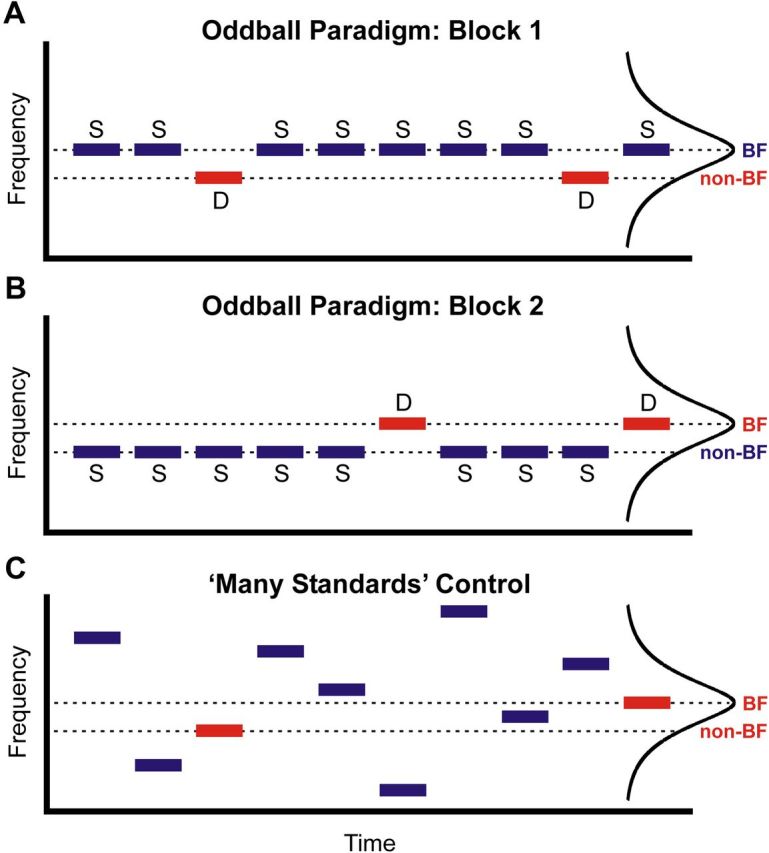Figure 1.

Schematic representation of the oddball and many standards control sequences. Frequency and time are represented on the y-axis and x-axis, respectively. Stimulus sequences are comprised of tones (horizontal bars; duration 200 ms) presented either in an oddball paradigm or in a many standards control paradigm. The FRF of the site is schematically shown on the right of each panel. Oddball sequences were comprised of standard (S; blue bars) and deviant (D; red bars) tones presented with a probability of 10%. A, In Block 1, standard tones had frequencies equal to the BF of the site, and deviant tones had frequencies equal to a frequency that elicited a response that was half the amplitude of the BF response (non-BF). B, In Block 2, the roles of BF and non-BF tones were reversed. C, In the many standards control condition, the same BF and non-BF tones comprising the oddball sequences in A and B were presented in the context of many standards of varying frequency.
